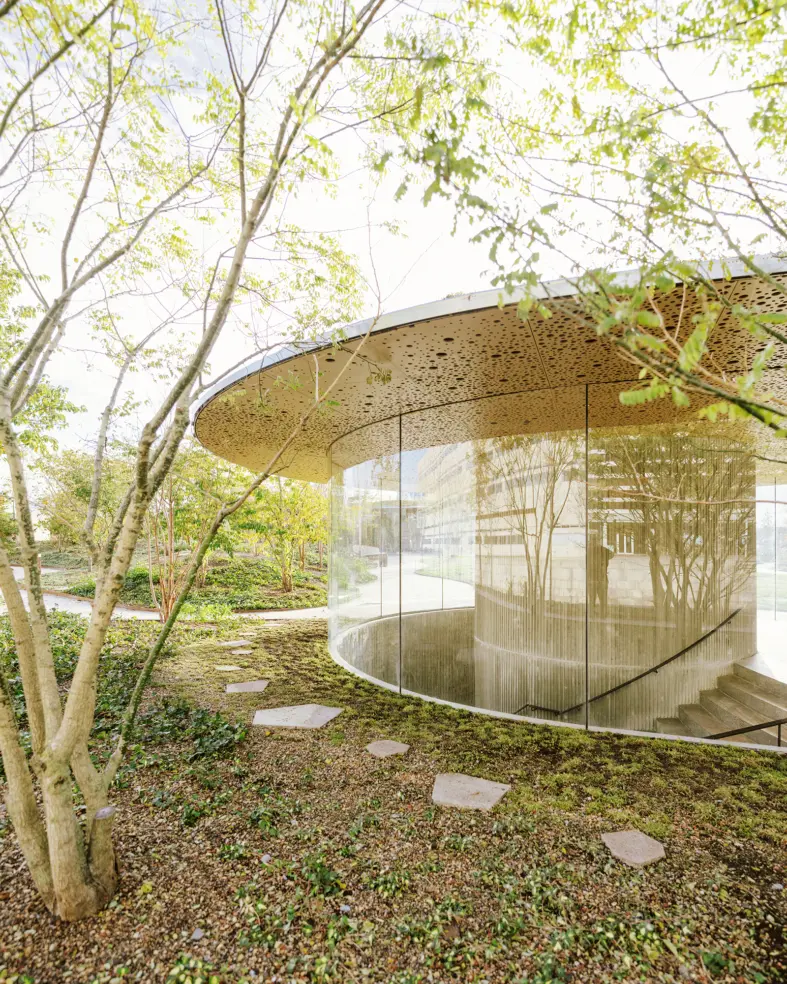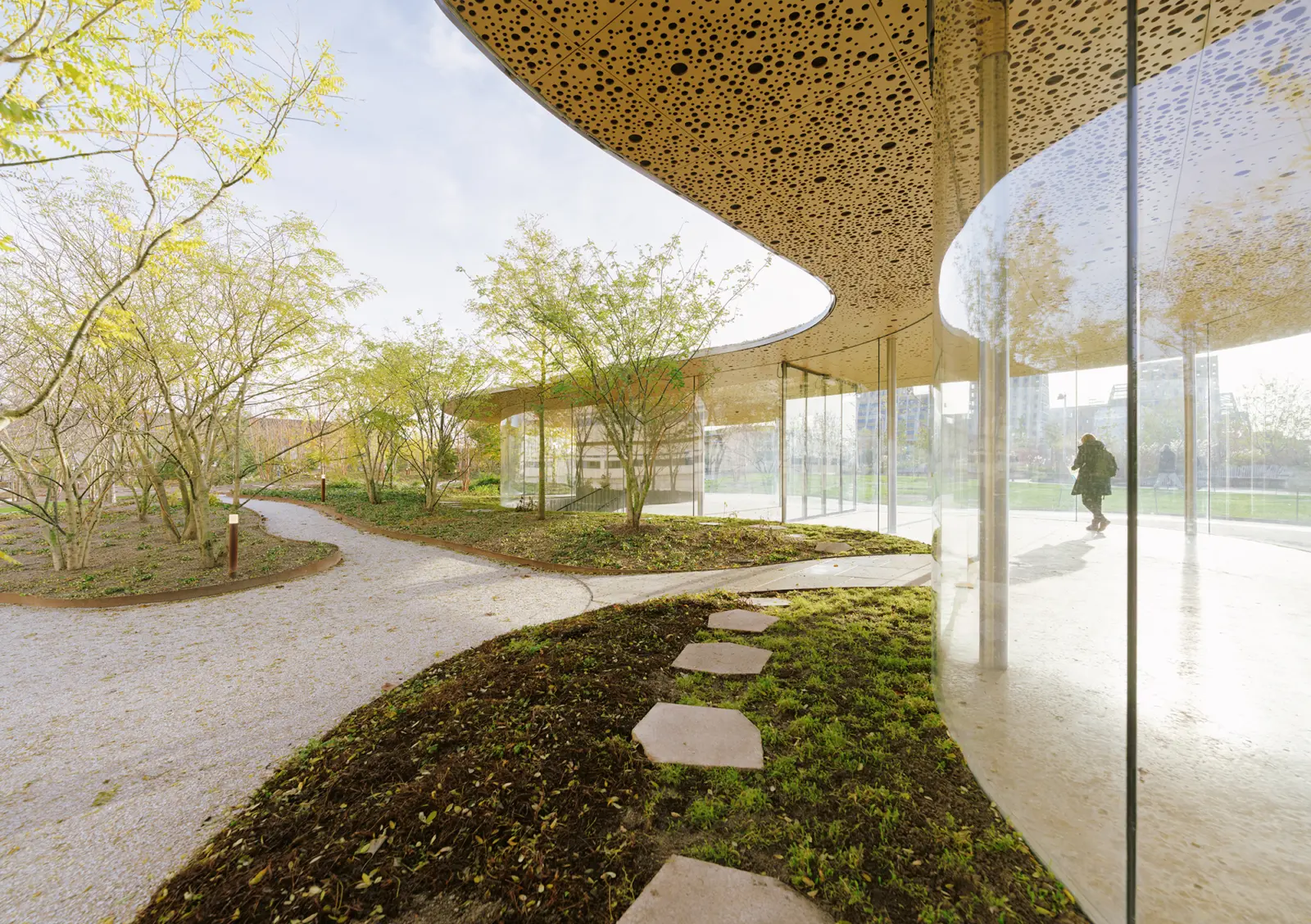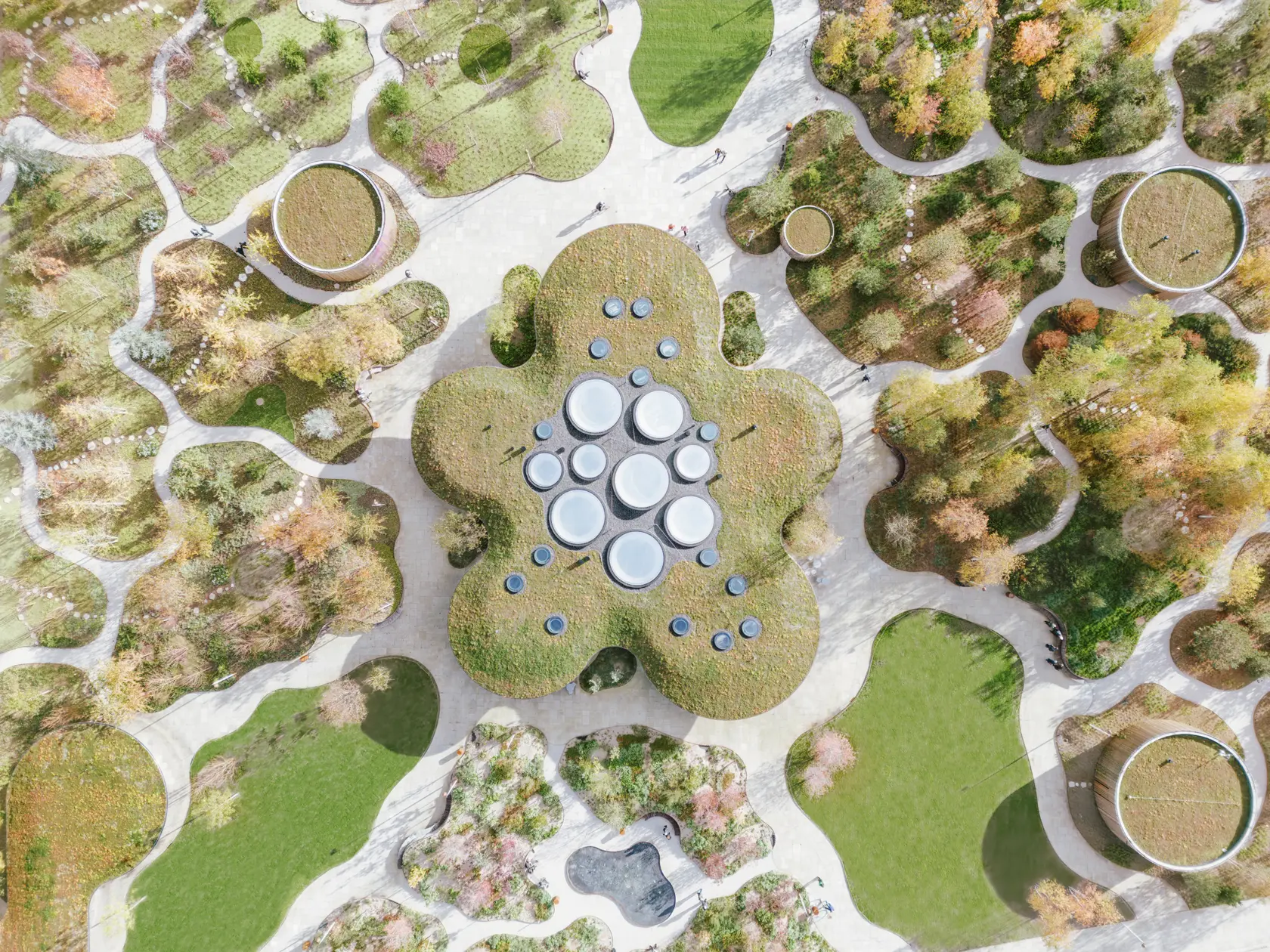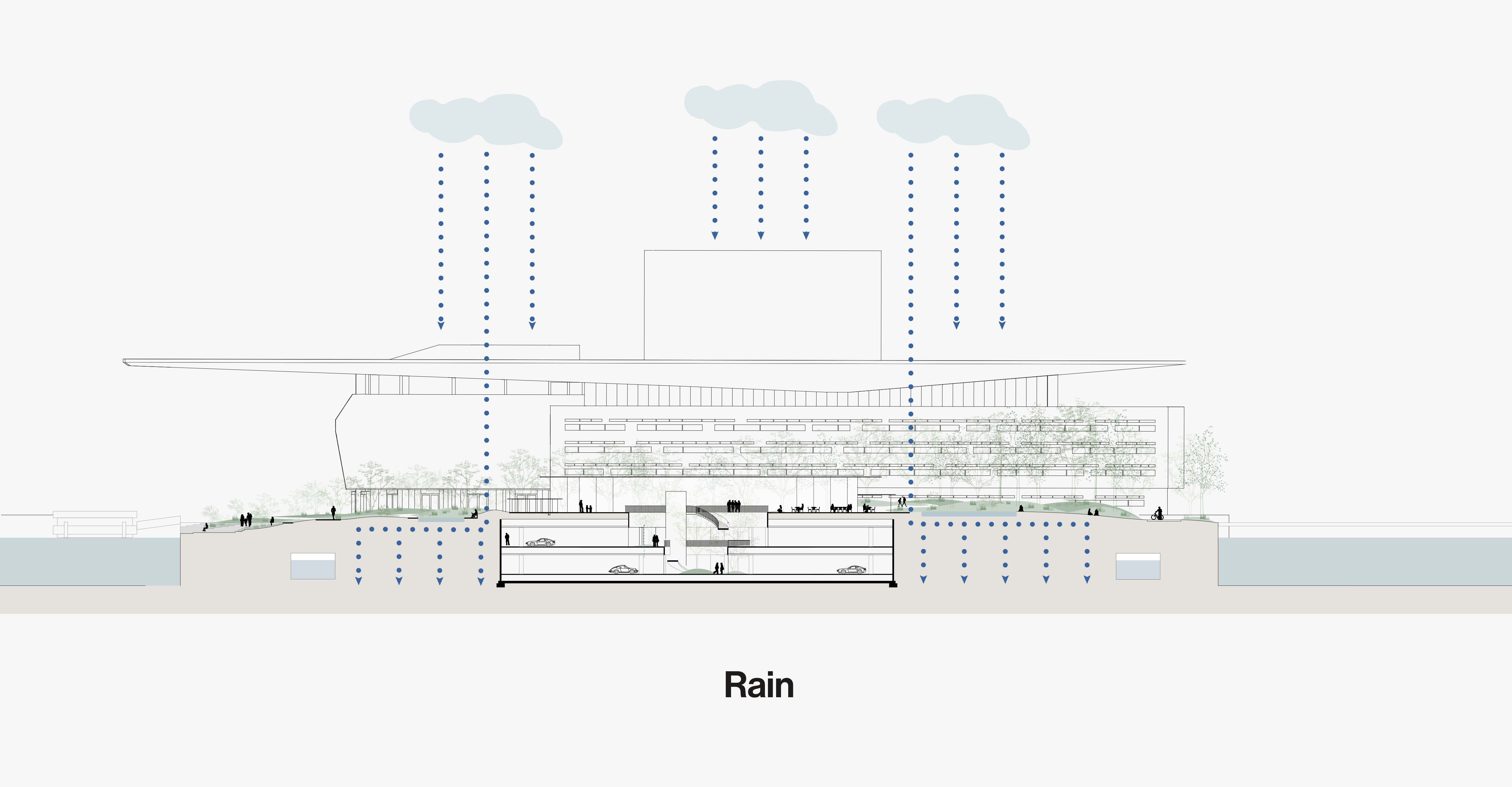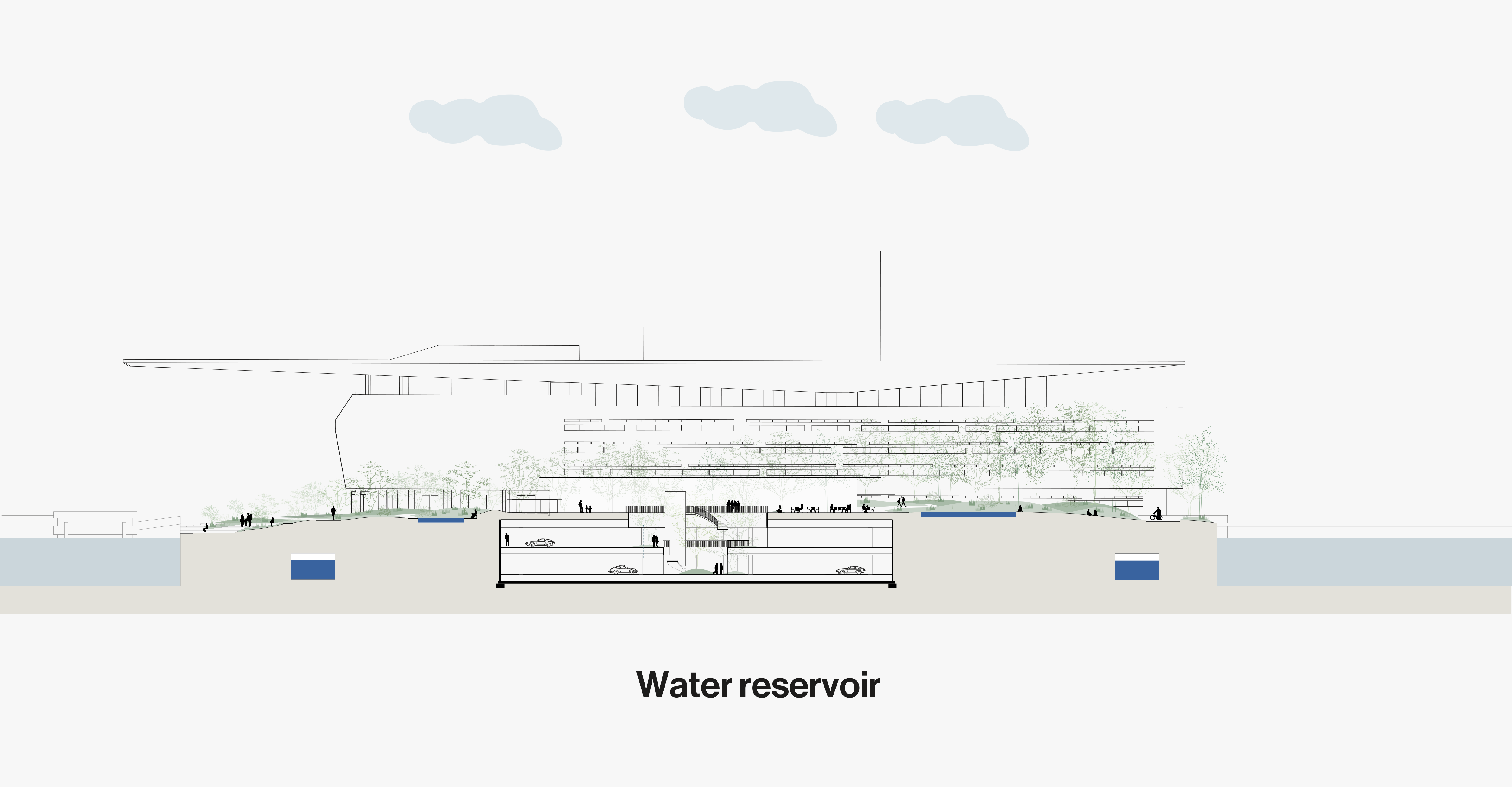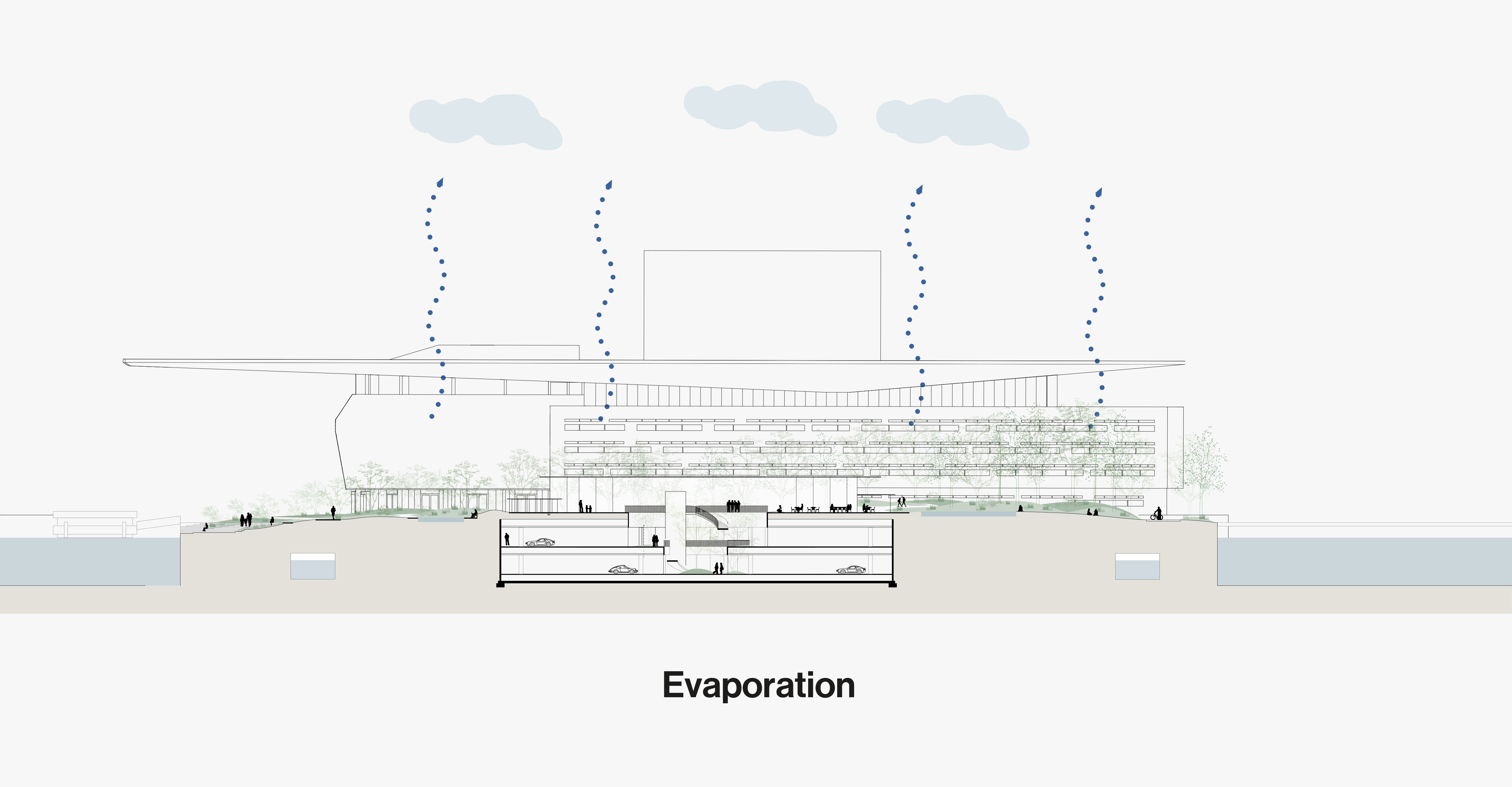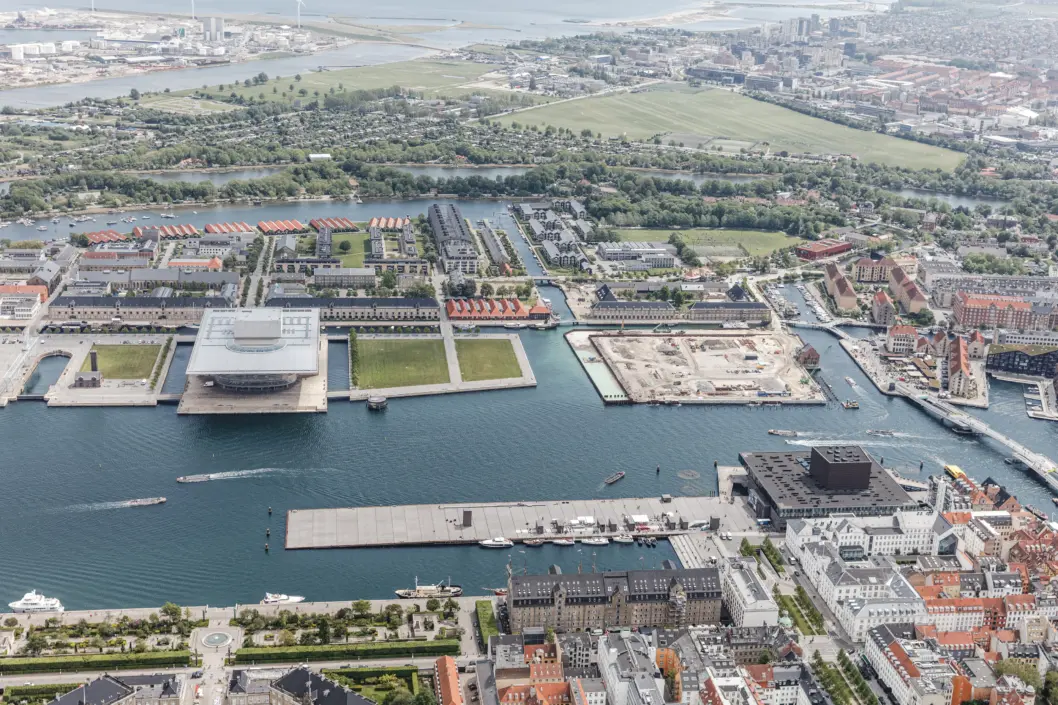
Located next to The Royal Danish Opera, the site has been a modest green lawn since the completion of the Opera nearly 20 years ago. Utterly transformed today, the island which was otherwise prime for the development of new housing, is now home to a diverse and natural landscape.
In the middle of the 19th century, the site where the Royal Danish Opera now stands was the center of an amazing period in Danish history. Copenhagen was the center of trade in Europe: A place where ships would return from the far corners of the world with cargo and stories from places that people had barely even heard of.
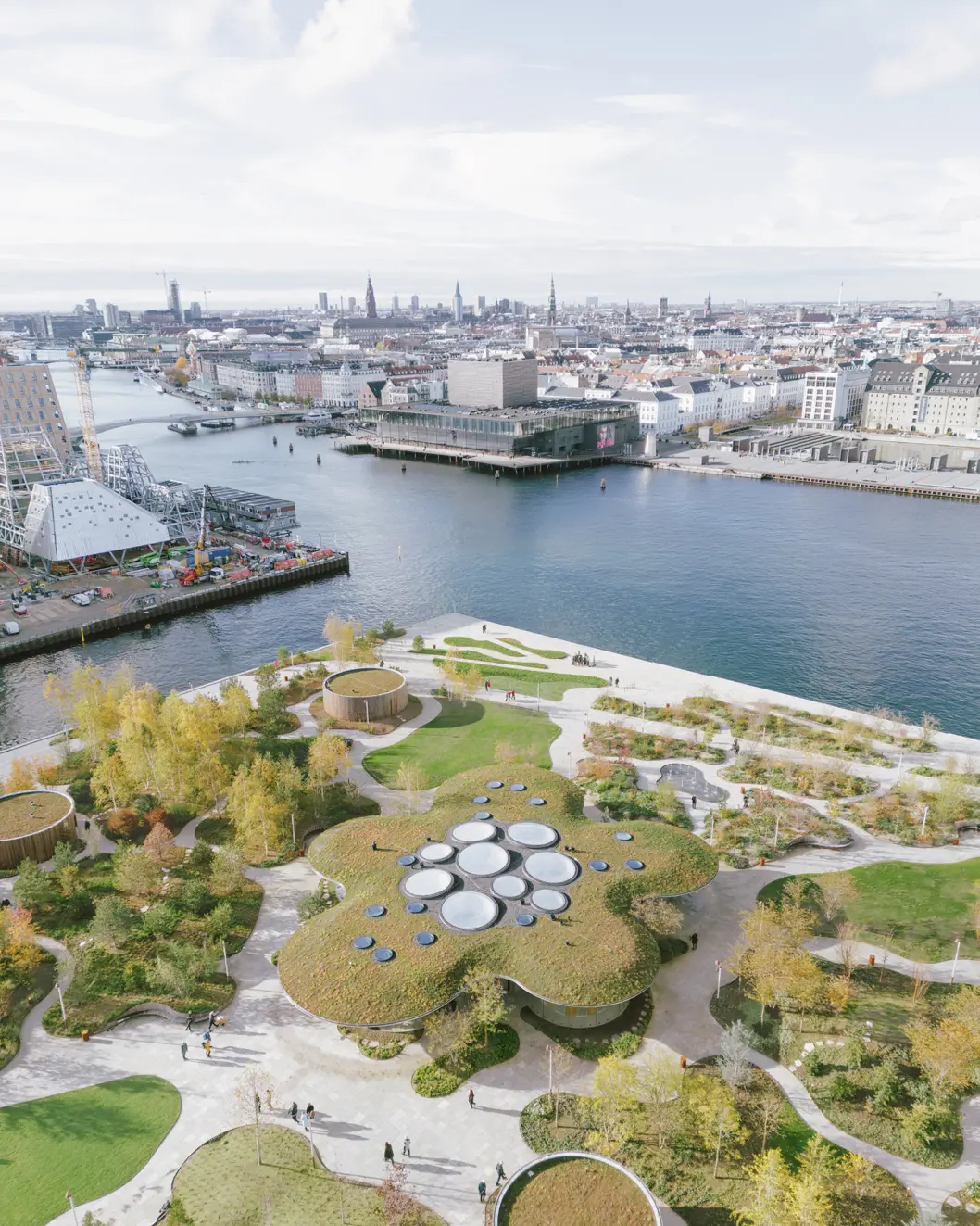
Today, The Opera Park offers a green and recreational escape from the bustling life of the city, and creates a counterpoint to the otherwise densely built inner harbor of Copenhagen.
contemporary context
Since the beginning of mass urbanization, gardens in the historic European cities have offered a refuge from the busy, noisy and polluted cities that surrounded them. Evidence-based studies have later concluded that classical gardens shaped with winding paths, defined views and a natural scenography have a healing effect on stress-related health issues. During the earlier era, however when the Copenhagen was a melting pot of trade and impressions from the seven seas, its most beautiful gardens were designed inspired by the classical English romantic garden.
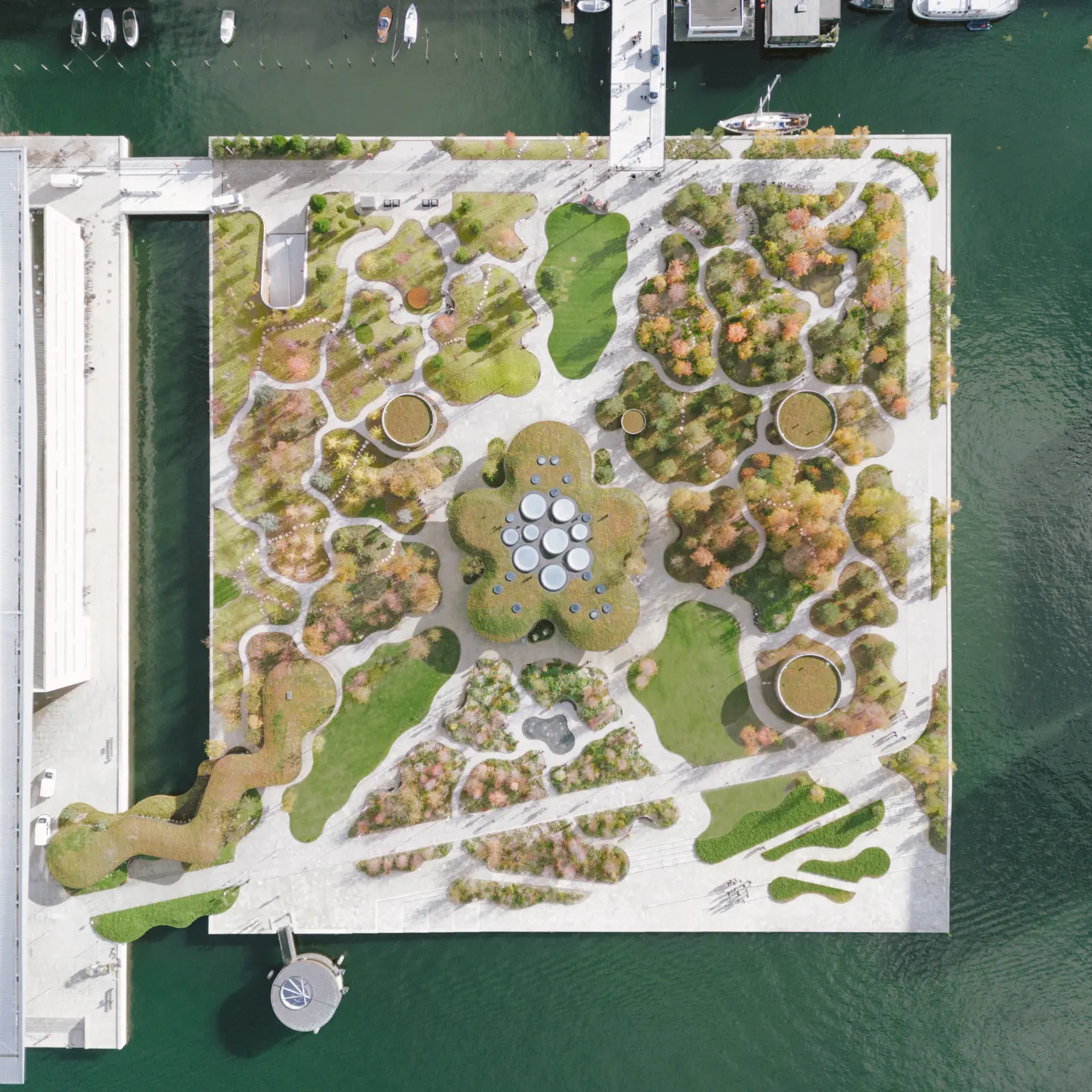
With its six gardens, winding paths small niches, carefully crafted viewpoints, and a central greenhouse, The Opera Park seizes elements of Copenhagen’s historical, romantic gardens in a modern setting.
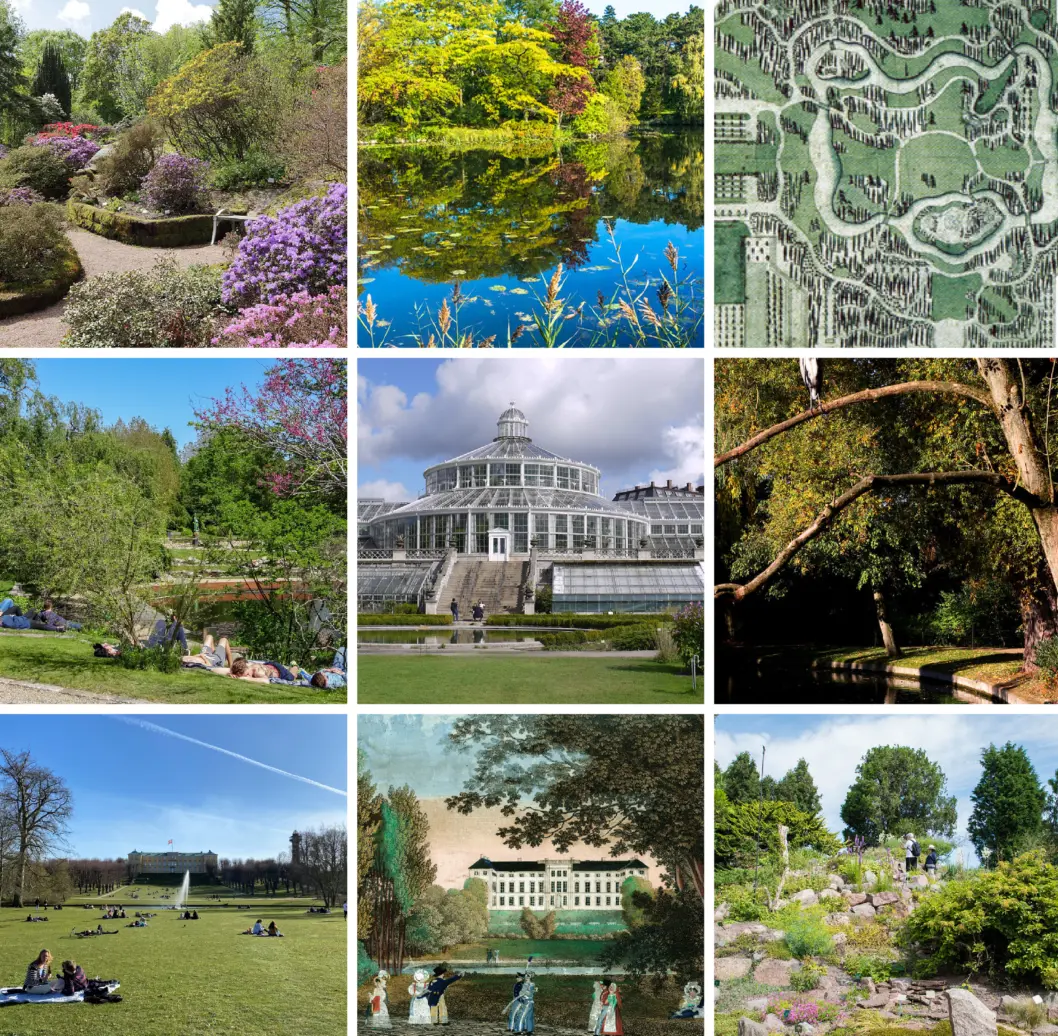
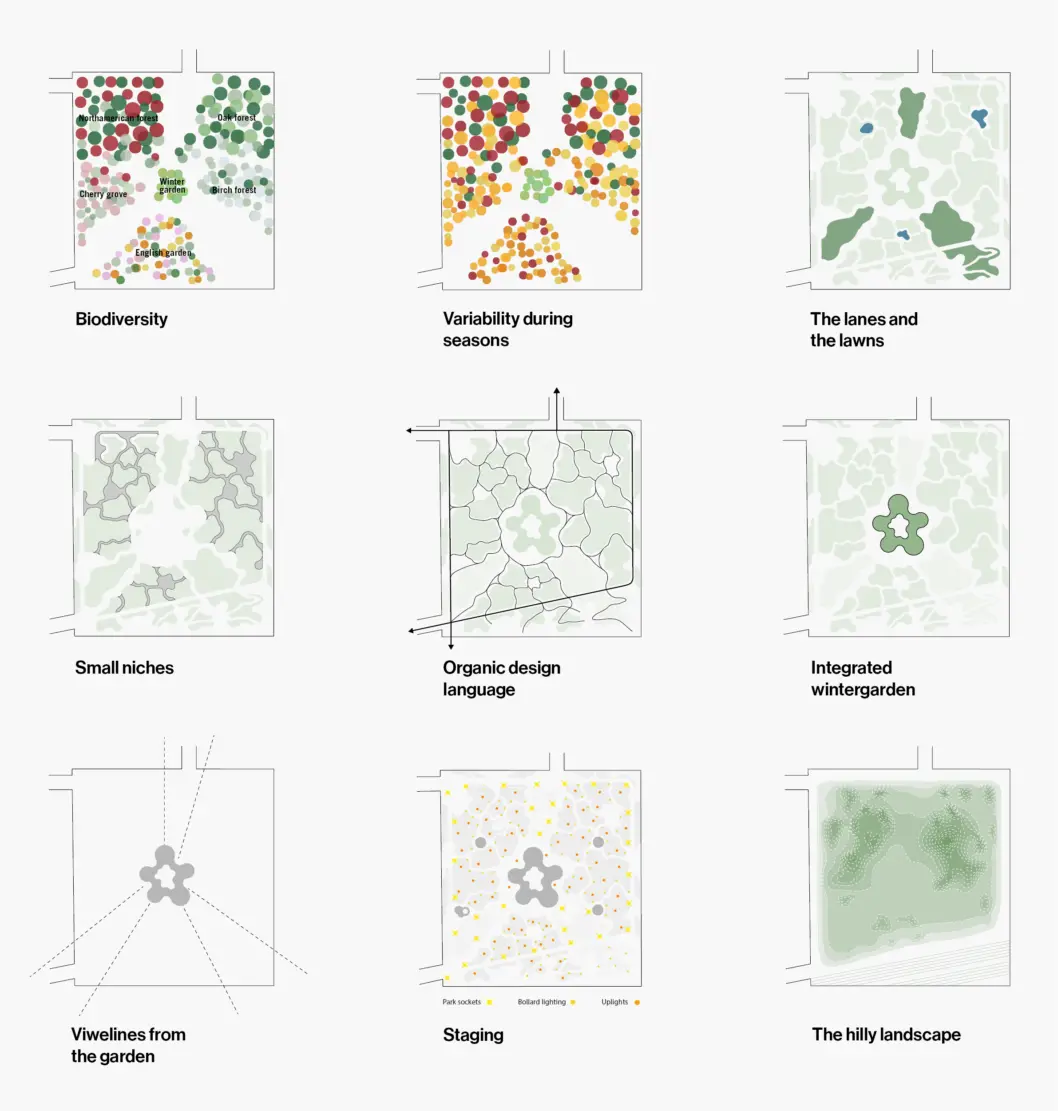
The Opera Park is a place where nature comes first amidst Copenhagen’s bustling urban development. The Opera Park uses the elements of the historical romantic garden to tackle contemporary challenges such as decline in biodiversity and water management. Designed for recreation, relaxation and contemplation, the park provides the city with a much-needed green oasis. As you stroll through the park, you get the feeling of having left the city and being immersed in nature, almost forgetting you are in the middle of the dense city center.
Dan Stubbergaard, architect and founder, Cobe
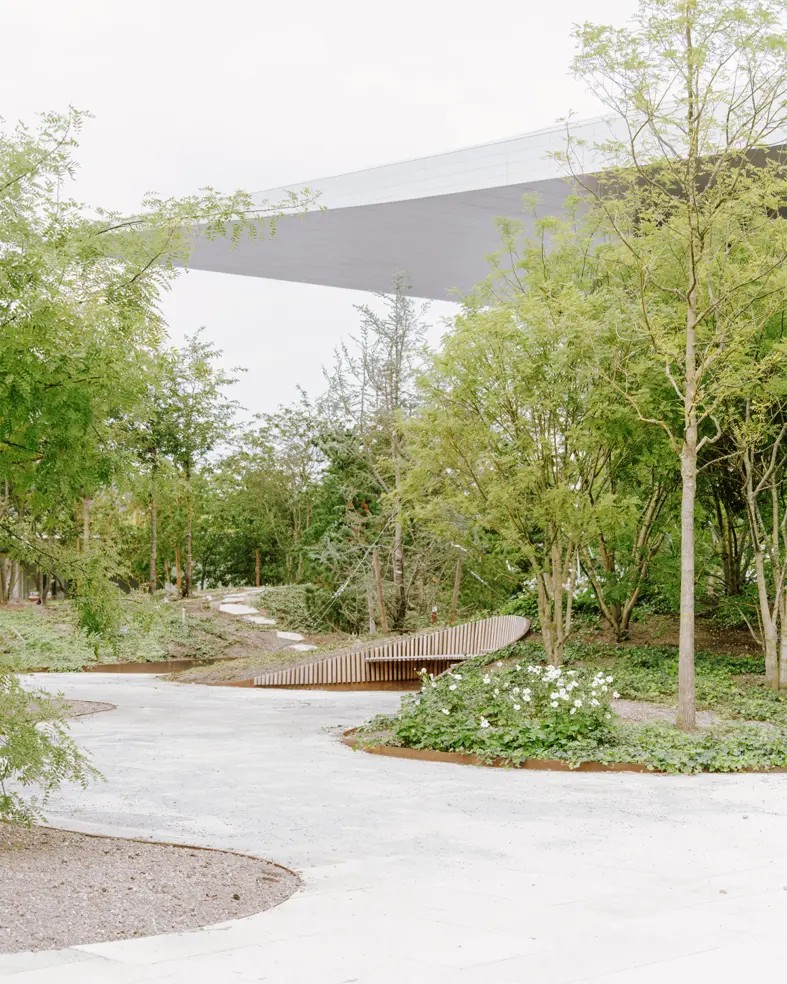
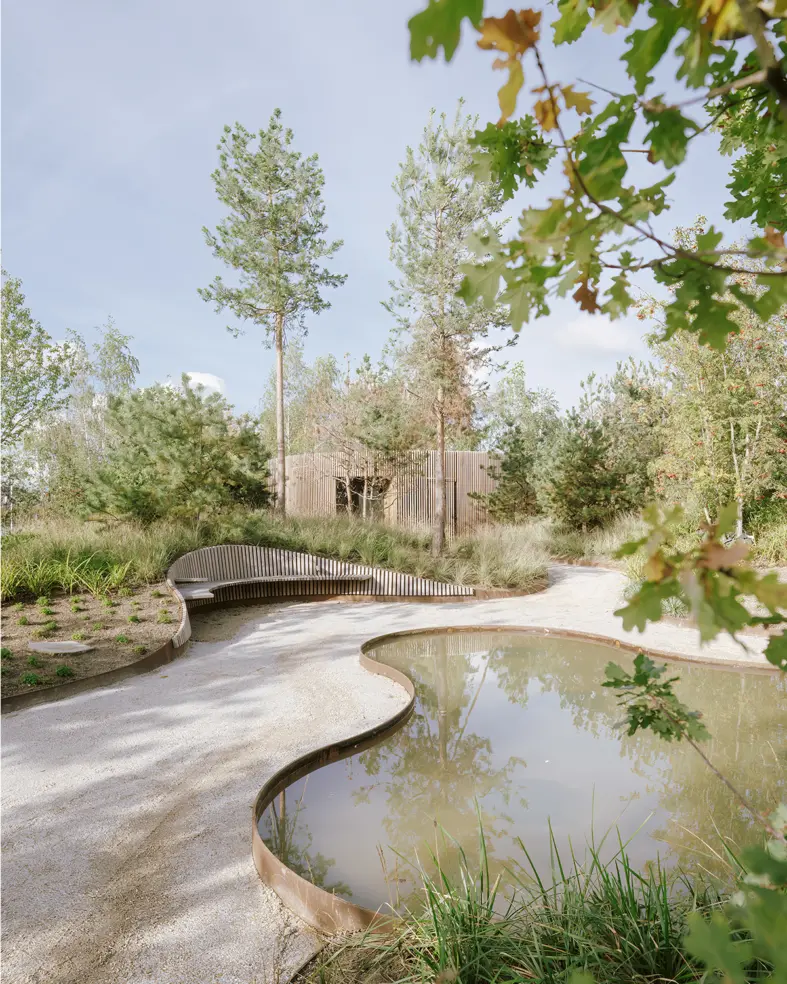
setting the stage for all
kinds of life

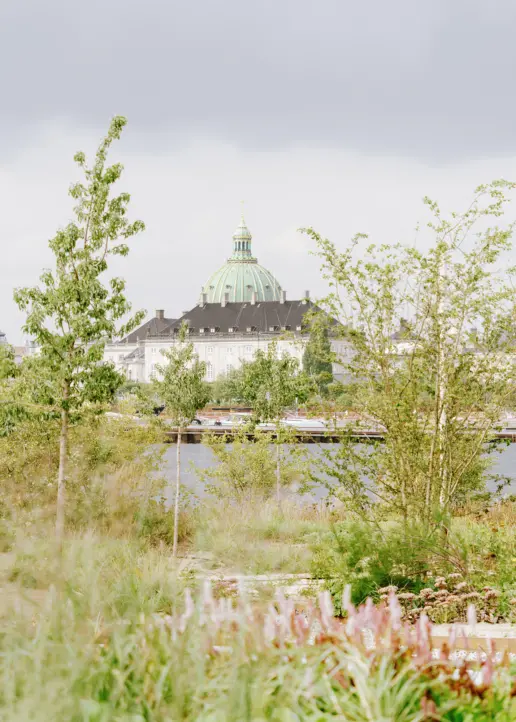
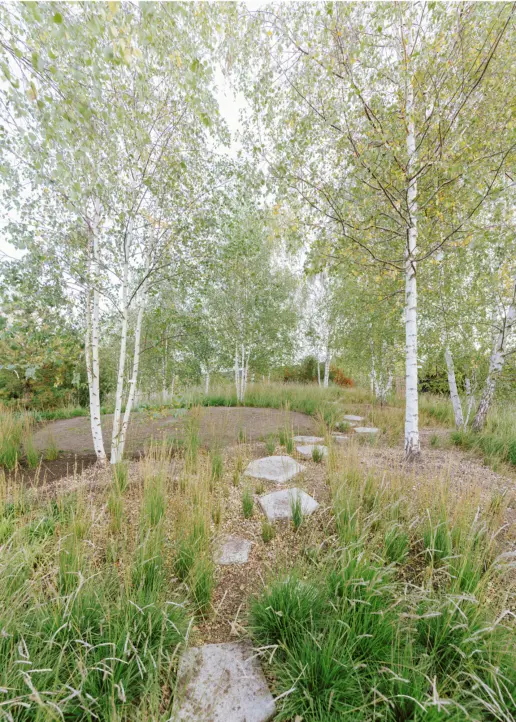
The park is green oasis in the city center, consisting of six gardens from various parts of the world: the North American Forest, the Danish Oak Forest, the Nordic Forest, the Oriental Garden, the English Garden, and the Subtropical Garden housed within the greenhouse.
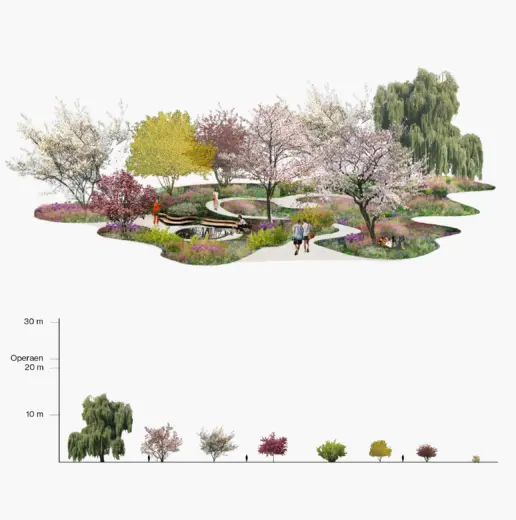
English garden
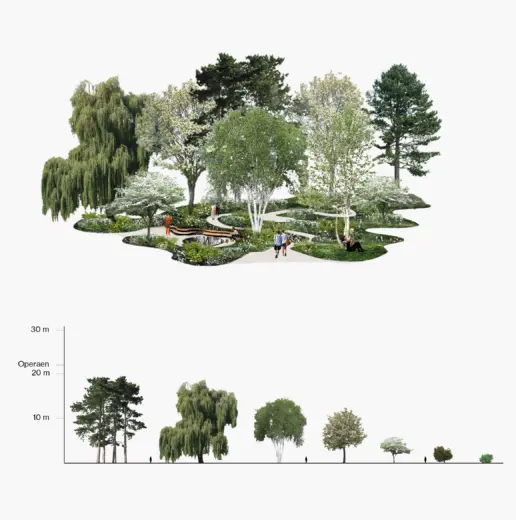
Birch forest
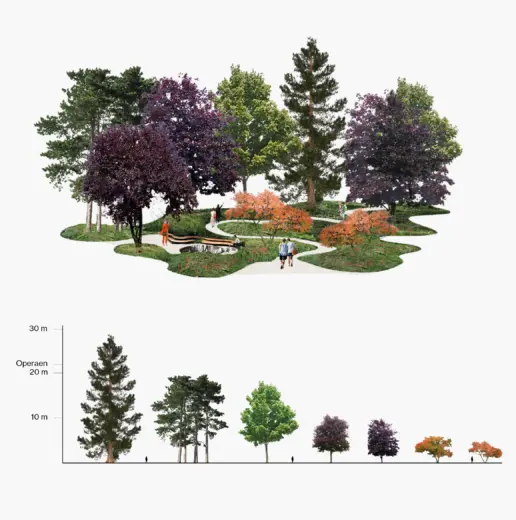
North American forest
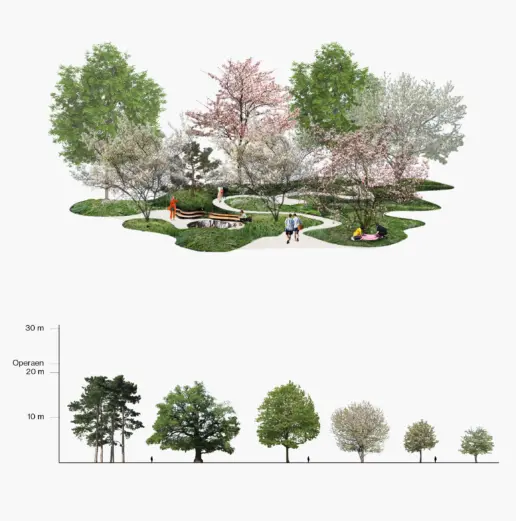
Cherry Grove
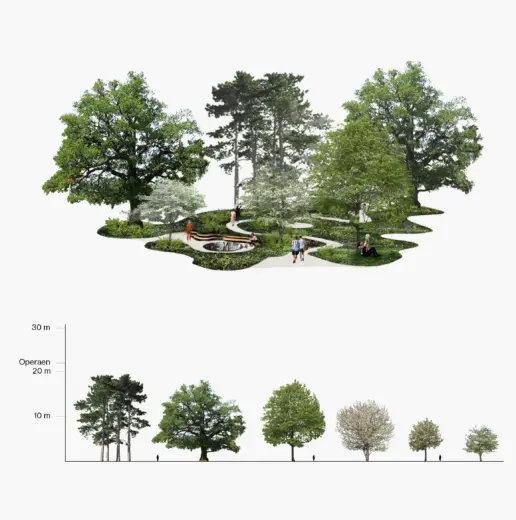
Oak forest
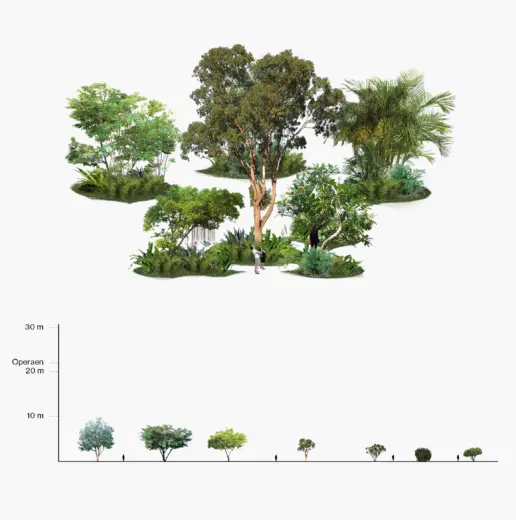
Winter garden
The diverse gardens hold surprises such as a fountain, a water lily pond, and a reflecting pool where drops of water from a mast gently strike the water’s surface in a soothing rhythm. Meandering paths and organically shaped flowerbeds knit together the park’s elements.
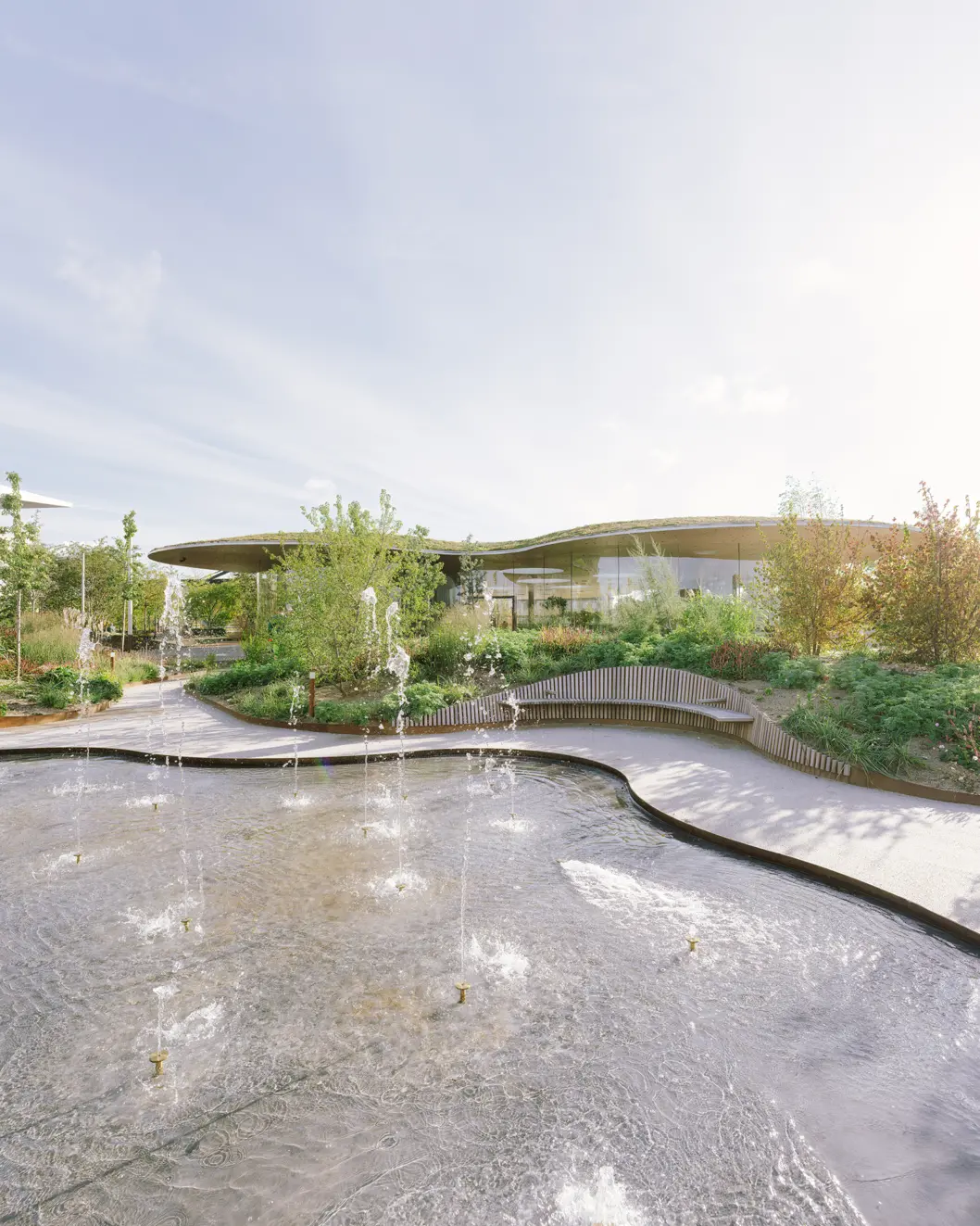

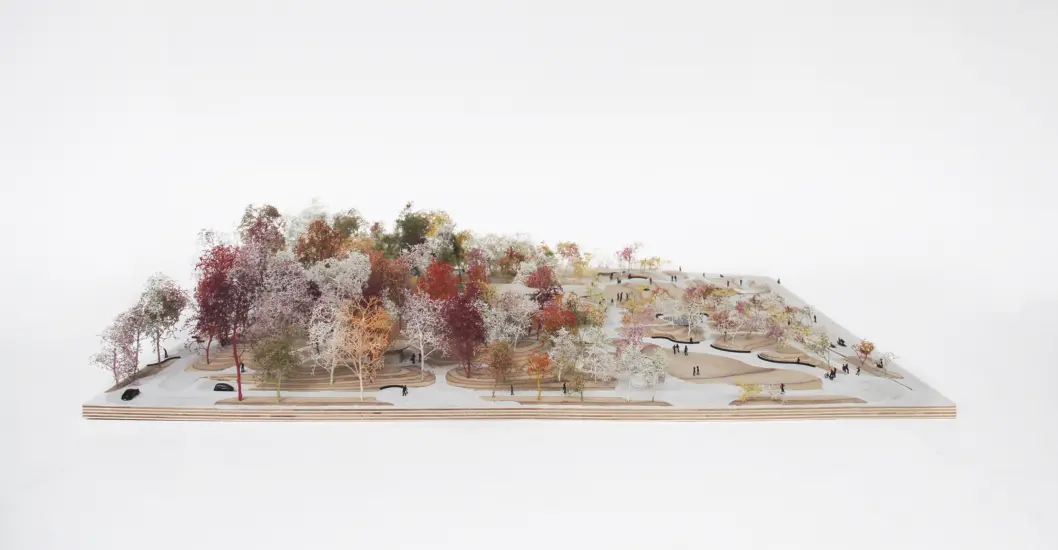
Like an opera stage, the park is a composed landscape with a foreground, a middle ground and a background. The plants and trees are placed, so their natural heights create the scenic setting facing the harbor.
Designed to be an inviting, year-round public attraction, the park features no less than 628 trees, 80,000 herbaceous perennials and bushes and 40,000 bulb plants from all around the world. In total, 223 unique exotic and local species provide a vibrant and ever-changing backdrop for visitors.
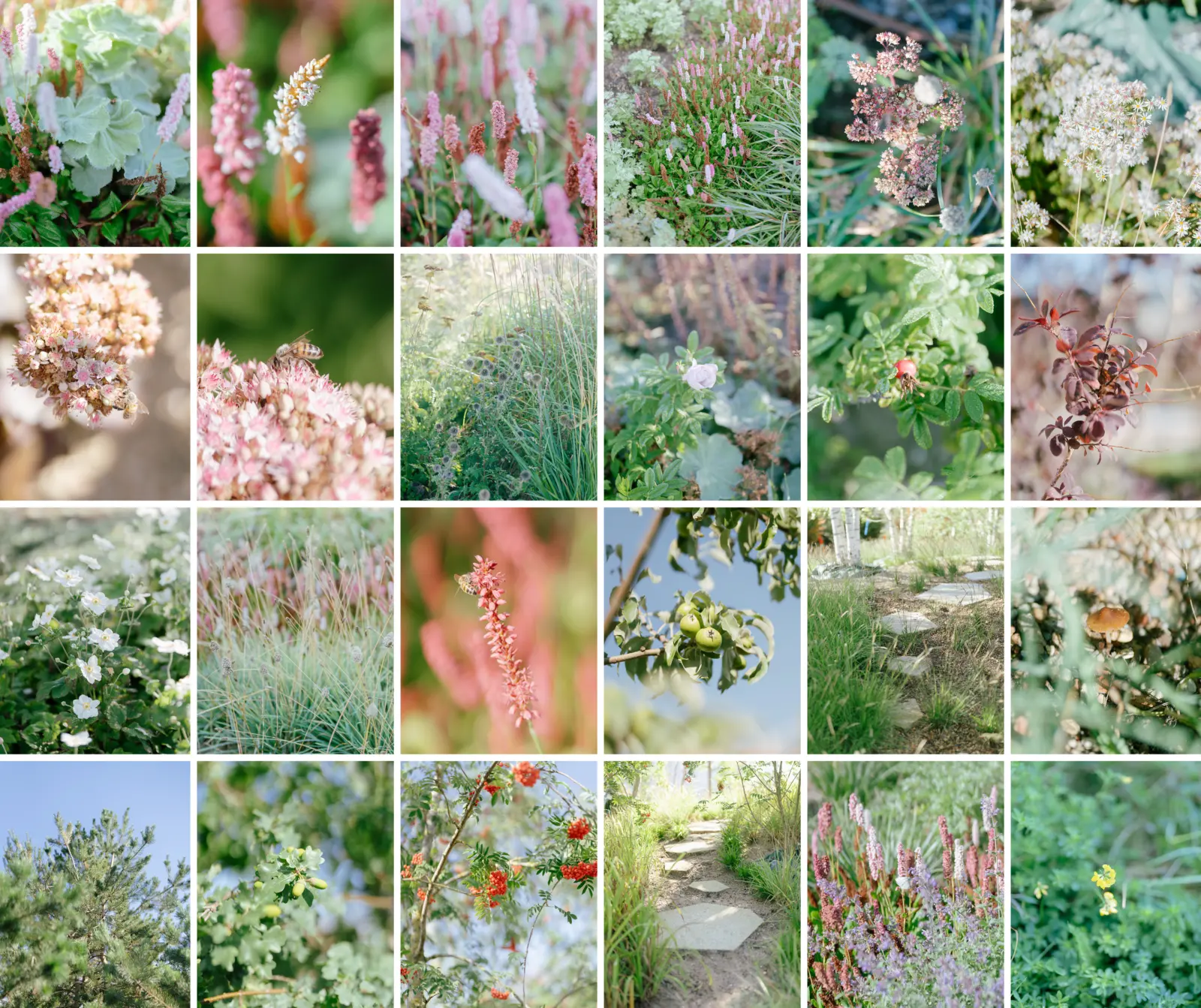
Rainwater is considered a valuable resource for the park, channeled from the roof of the Royal Danish Opera into underground water reservoirs used for greenhouse irrigation. Excess rainwater is collected in rain beds for infiltration and evaporation. The green roofs of the landscaped bridge and greenhouse capture and delay the release rainwater to the site while also serving as a food source for the park’s fauna.
The abundance of trees and plantings shield against strong winds coming from the harbor and the sea, reducing turbulence and increasing the level of comfort for park users. Furthermore, the elevated terrain safeguards the island from flooding during heavy rainfall and significant rises in the harbor water level.
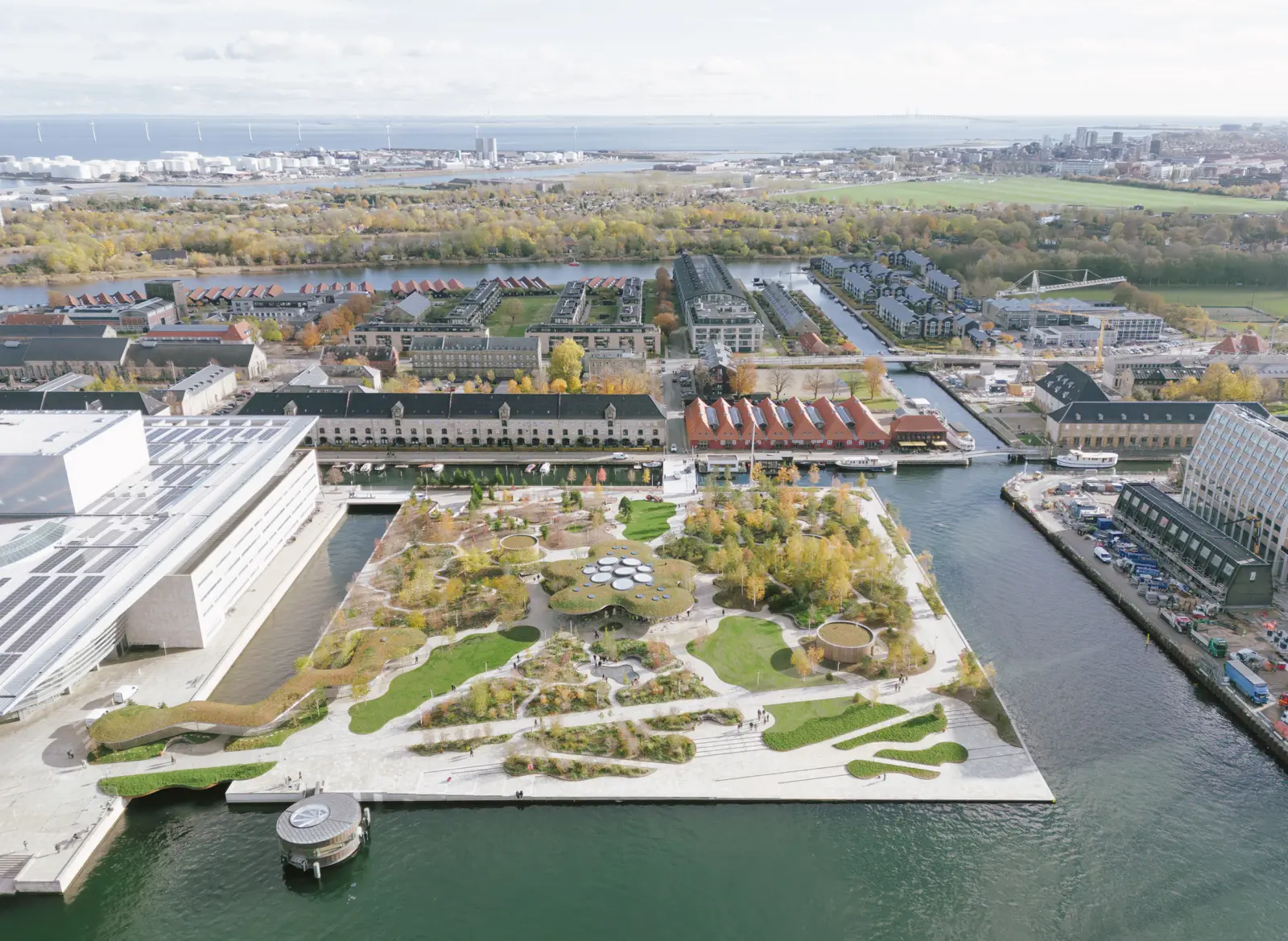
centerpiece of the park
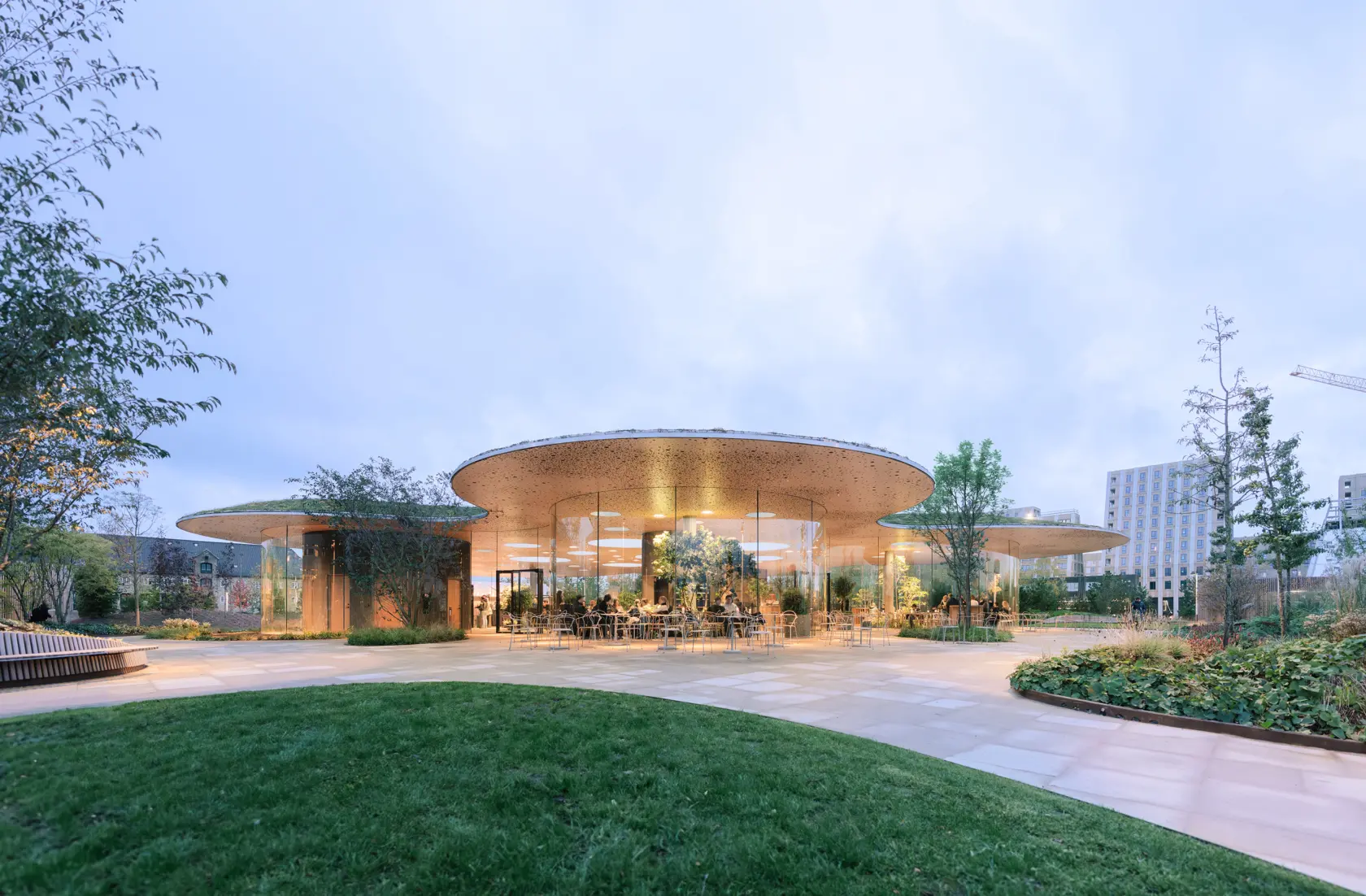
The park features a central greenhouse with a café, giving access to car parking underneath the park’s surface. The greenhouse and café will ensure that The Opera Park remains a vibrant destination year-round, even during winter when many of Copenhagen’s parks are desolate.
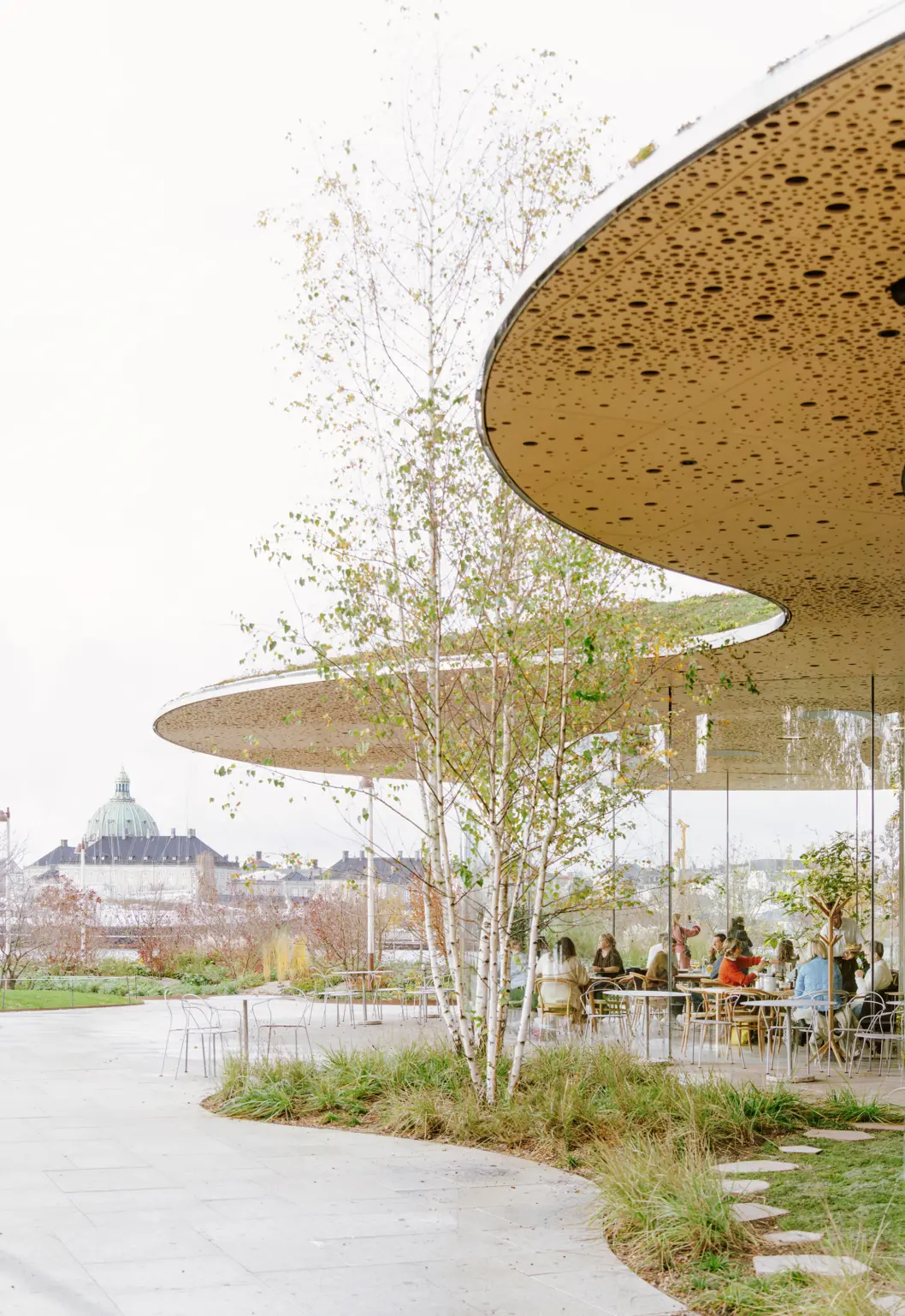
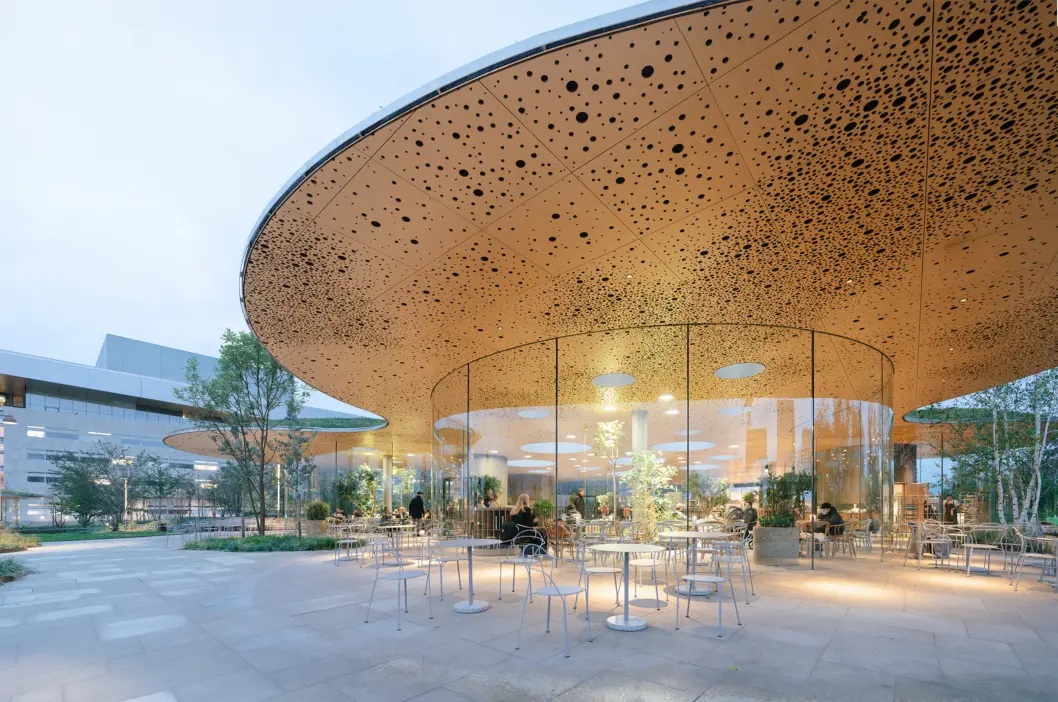
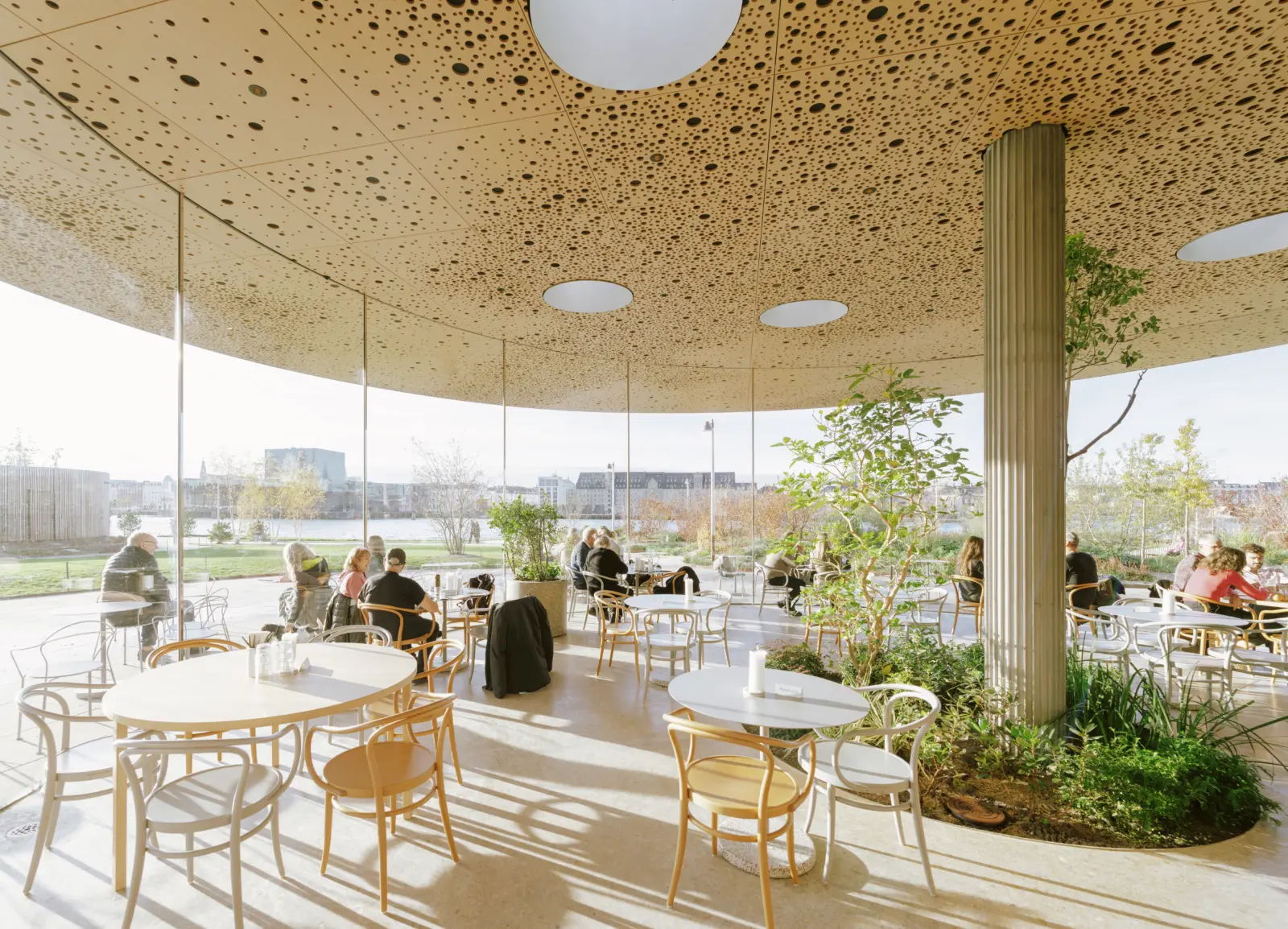
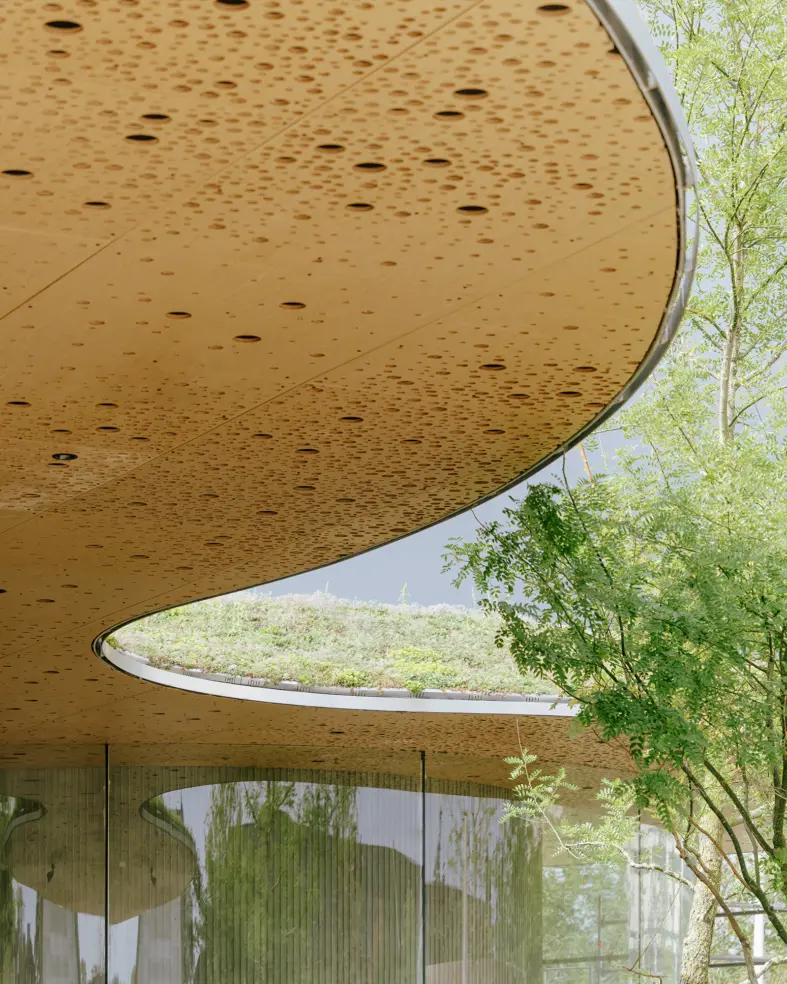
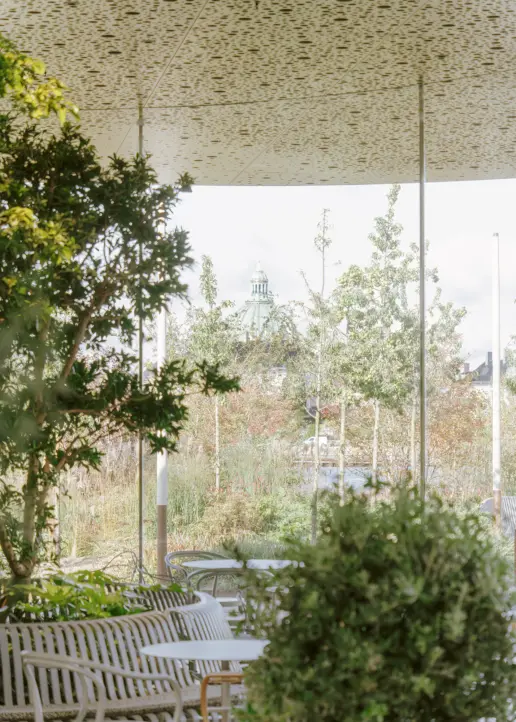
The greenhouse is designed as an organically shaped glass structure with a hovering roof, intended to surprise and delight visitors as they navigate the lush landscape.
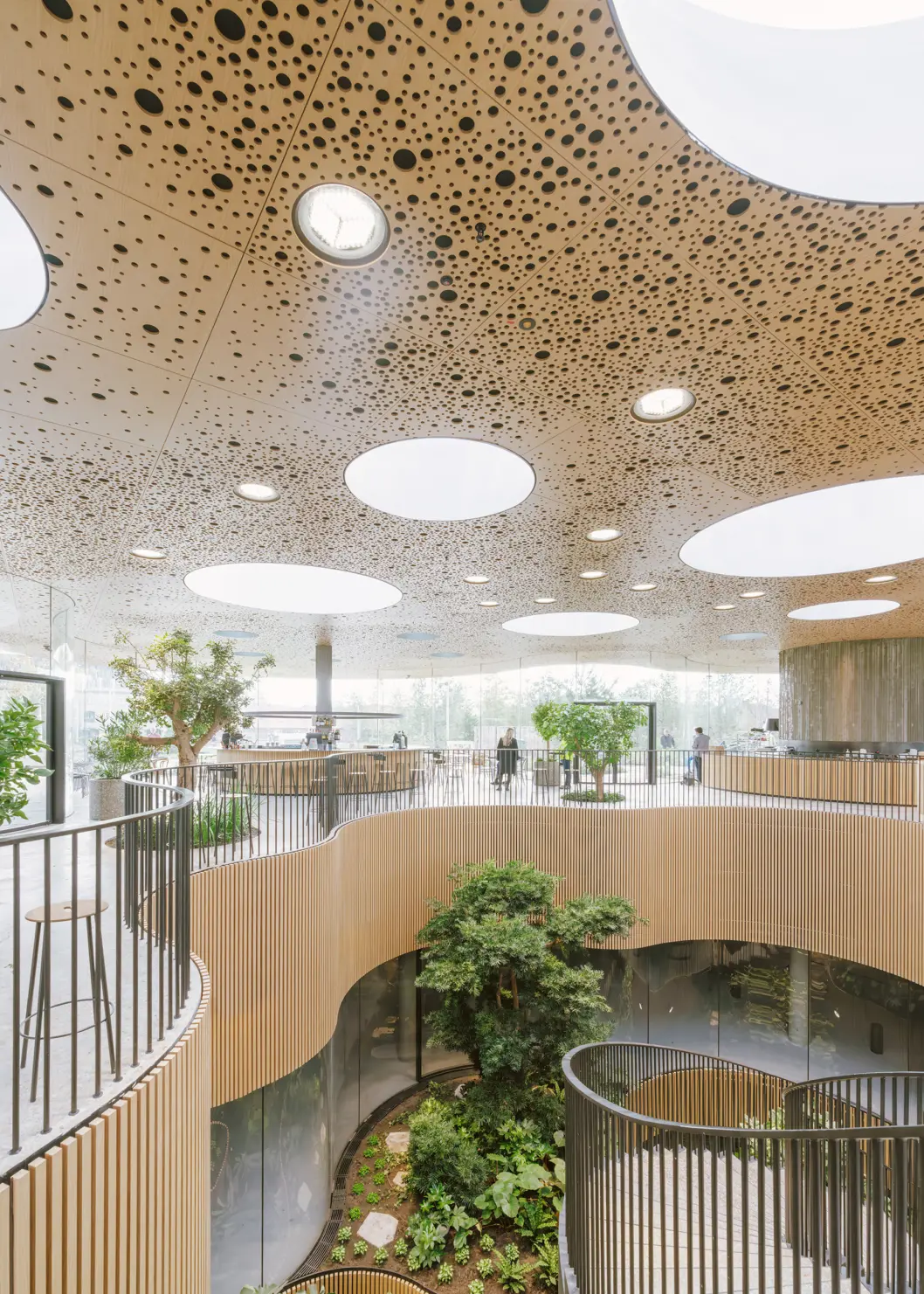
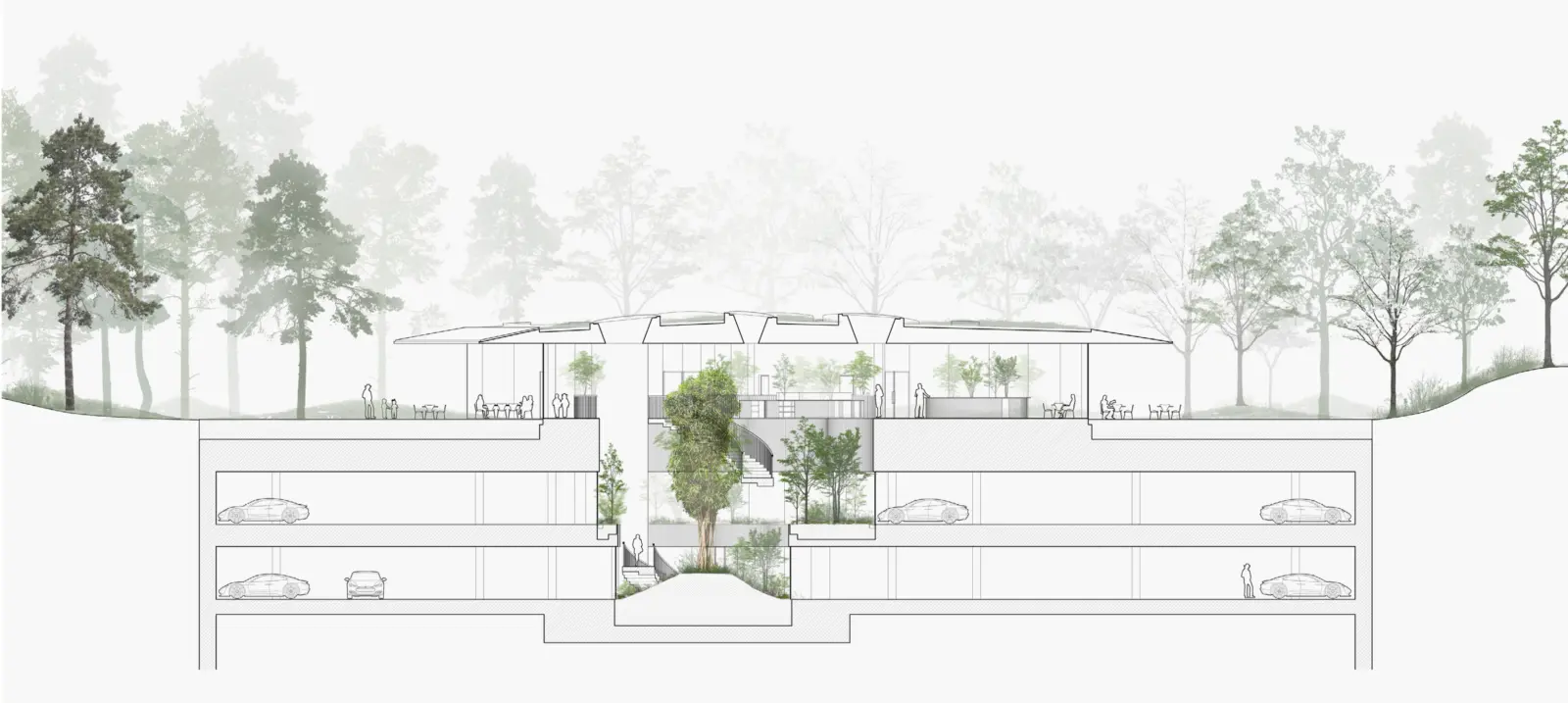
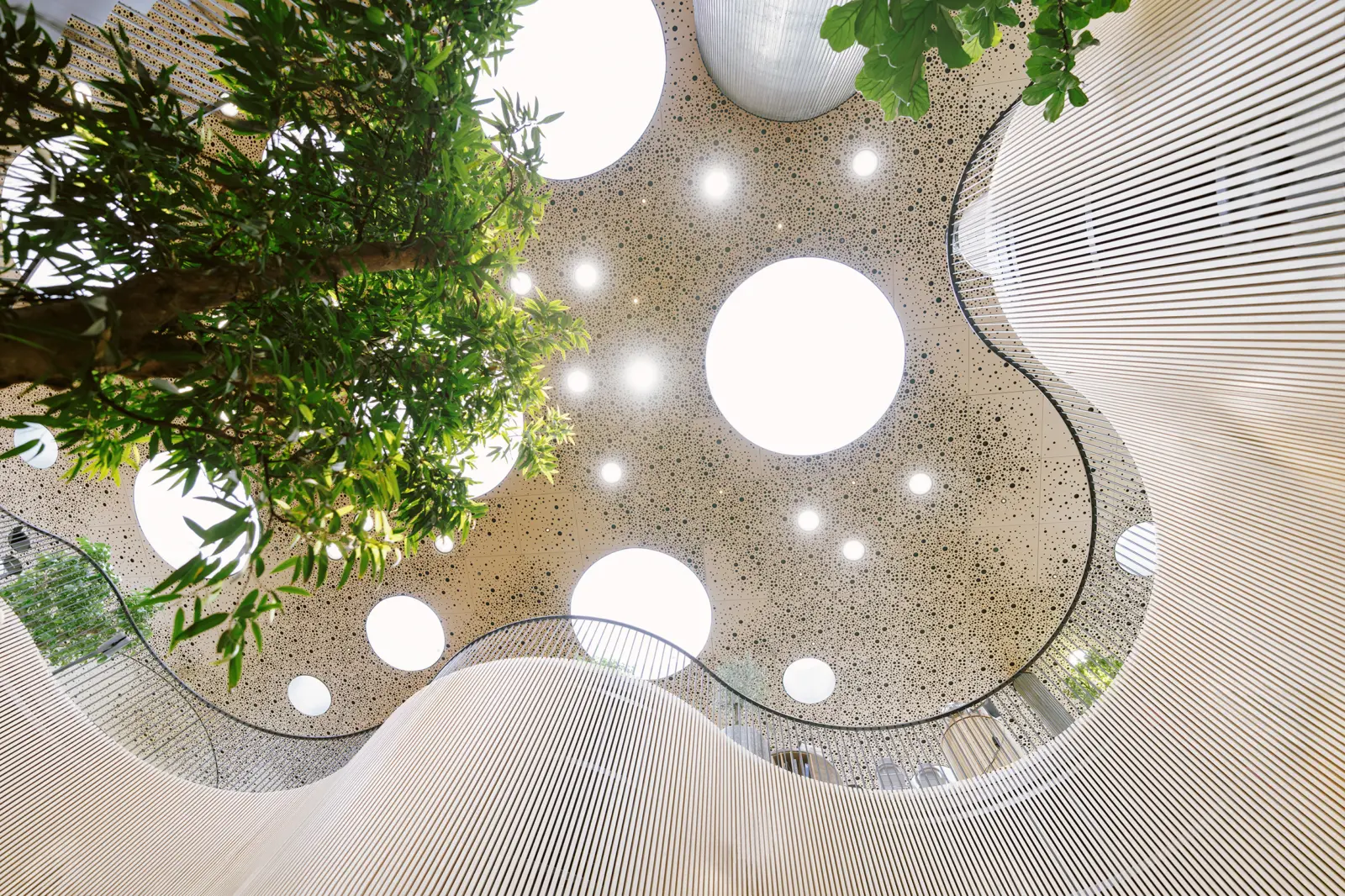
Inside, the greenhouse terraces down to the parking levels, which accommodate up to 300 cars, while its subtropic biotope also descends to vertically weave together the park with the underground levels.
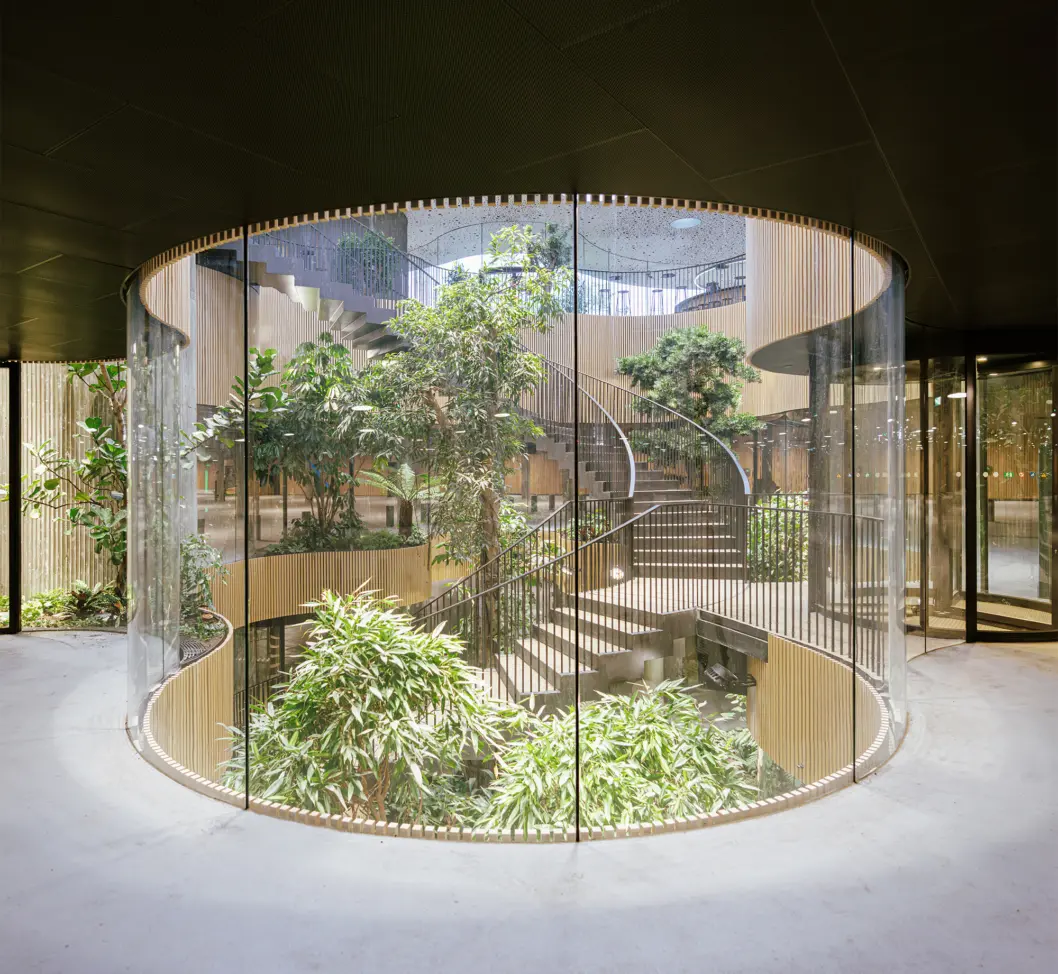
bridge to the Opera
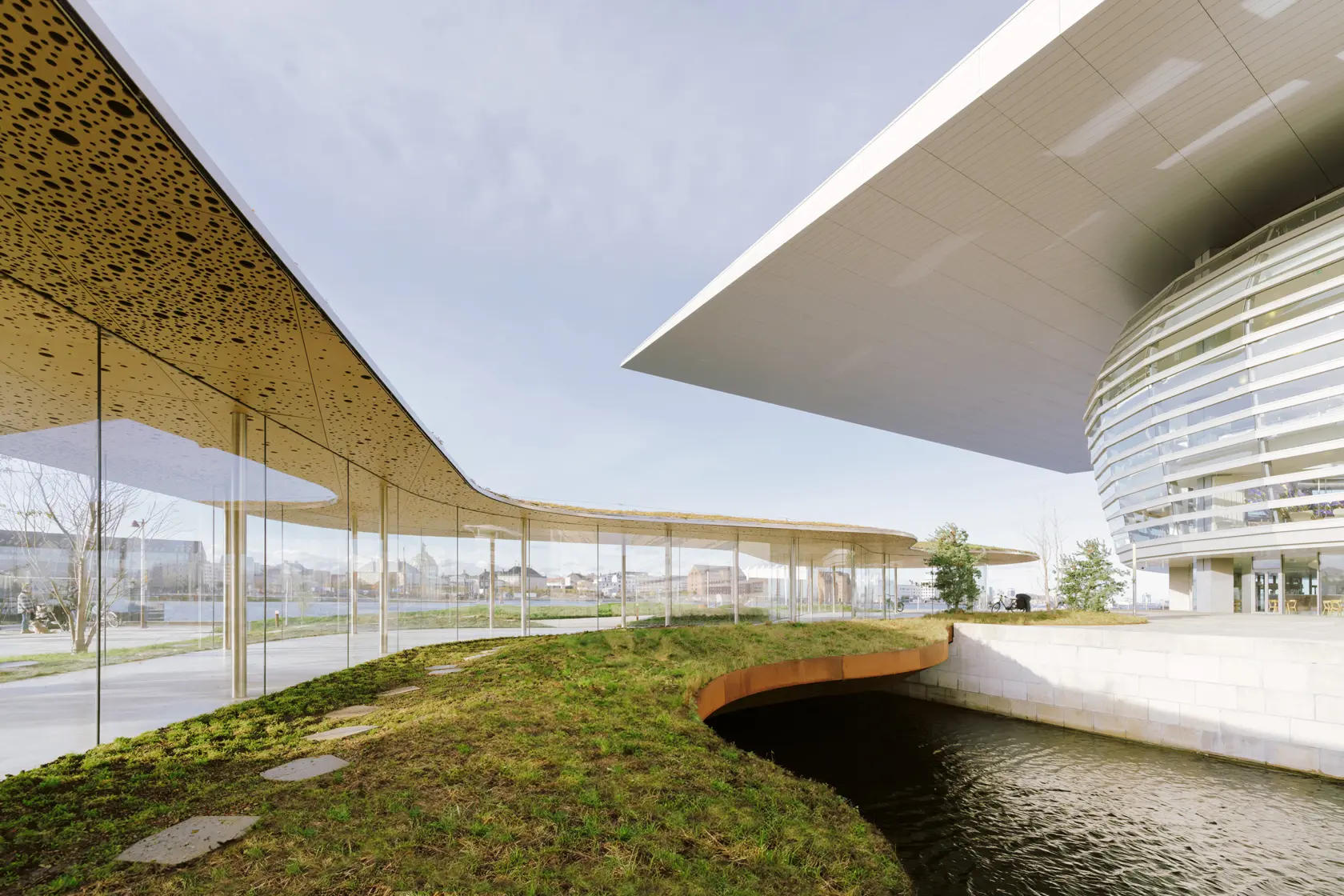
The park also features a covered connection to the adjacent Royal Danish Opera via a covered walkway atop a landscaped bridge, allowing a weather protected link between the parking facility and the Opera. Echoing the architecture of the greenhouse, the walkway’s curved glass and a floating roof evokes the landscape design in its meandering path - fully integrating landscape and architecture into one.
